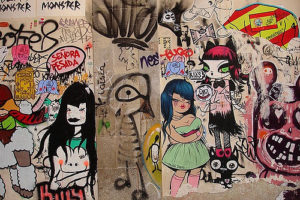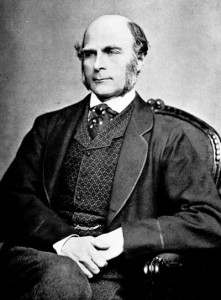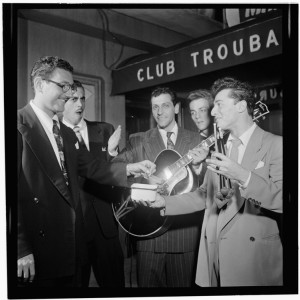Main Body
Chapter 2. Culture

Learning Objectives
- Differentiate between culture and society.
- Distinguish between biological and cultural explanations of human behaviour.
- Compare and contrast cultural universalism, cultural relativism, ethnocentrism, and androcentrism.
- Examine the policy of multiculturalism as a solution to the problem of diversity.
- Understand the basic elements of culture: values, beliefs, and norms.
- Explain the significance of symbols and language to a culture.
- Describe the Sapir-Whorf hypothesis.
- Distinguish material and nonmaterial culture.
3.3. Culture as Innovation: Pop Culture, Subculture, and Global Culture
- Distinguish two modes of culture: innovation and restriction.
- Discuss the distinction between high culture, pop culture, and postmodern culture.
- Differentiate between subculture and counterculture.
- Understand the role of globalization in cultural change and local lived experience.
3.4. Culture as Restriction: Rationalization and Commodification
- Describe culture as a form of restriction on social life.
- Explain the implications of rationalization and consumerism.
3.5. Theoretical Perspectives on Culture
- Discuss the major theoretical approaches to cultural interpretation.
Introduction to Culture

Are there rules for eating at McDonald’s? Generally, we do not think about rules in a fast food restaurant we just do what we have done many times before. But if you step back and observe this everyday behaviour ‘as if’ you had never been to such a restaurant you will notice people who seem that they were trained for the role of fast food customer. They stand in line, pick their items from overhead menus before they order, swipe debit cards to pay, and stand to one side to collect trays of food. After a quick meal, customers wad up their paper wrappers and toss them into garbage cans. This is a food system that has become highly rationalized in Max Weber’s terms. Customers’ movement through this fast food routine is orderly and predictable, even if no rules are posted and no officials direct the process.
If you want more insight into these unwritten rules, think about what would happen if you behaved according to some other standards. (You would be doing what sociologists call a “breaching experiment” in ethnomethodology: deliberately disrupting social norms in order to learn about them.) For example: call ahead for reservations; ask the cashier detailed questions about the food’s ingredients or how it is prepared; barter over the price of the burgers; ask to have your meal served to you at your table; or throw your trash on the ground as you leave. Chances are you will elicit hostile responses from the restaurant employees and your fellow customers. Although the rules are not written down, you will have violated deep seated tacit norms that govern behaviour in fast food restaurants.
This example reflects a broader theme in the culture of food and diet. What are the rules that govern what, when, and how we eat? Michael Pollan (b. 1955), for example, contrasts the North American culture of fast food with the intact traditions of eating sit-down, family meals that still dominate in France and other European nations (2006). Despite eating foods that many North Americans think of as unhealthy — butter, wheat, triple-cream cheese, foie gras, wine, etc. — the French, as a whole, remain healthier and thinner than North Americans.
The French eat all sorts of supposedly unhealthy foods, but they do it according to a strict and stable set of rules: They eat small portions and don’t go back for seconds; they don’t snack; they seldom eat alone; and communal meals are long, leisurely affairs. (Pollan, 2006)
Their cultural rules fix and constrain what people consider as food and how people consume food. The national cuisine and eating habits of France are well established, oriented to pleasure and tradition, and as Pollan argues, well integrated into French cultural life as a whole.

In North America, on the other hand, fast food is just the tip of an iceberg with respect to a larger crisis of diet in which increasing levels of obesity and eating disorders are coupled with an increasing profusion of health diets, weight reducing diets, and food fads. While an alarming number of North American meals are eaten in cars (19 percent, according to Pollan), the counter-trend is the obsession with nutritional science. Instead of an orientation to food based on cultural tradition and pleasure, people are oriented to food in terms of its biochemical constituents (calories, proteins, carbohydrates, vitamins, omega fatty acids, saturated and unsaturated fats, etc.). There are Atkins diets, zone diets, Mediterranean diets, paleolithic diets, vegan diets, gluten free diets, Weight Watchers diets, raw food diets, etc.; an endless proliferation that Pollan attributes to a fundamental anxiety that North Americans have about food and health:
that taste is not a true guide to what should be eaten; that one should not simply eat what one enjoys; that the important components of food cannot be seen or tasted, but are discernible only in scientific laboratories; and that experimental science has produced rules of nutrition that will prevent illness and encourage longevity. (Levenstein as cited in Pollan, 2006)
The dramatically different food choices and ways of thinking about eating demonstrate that diet is culturally constructed, these ‘choices’ are heavily influenced by cultural meanings attributed to food and its nutritional components. Food culture and diet are not infinitely malleable, however. There is an underlying biological reality of nutrition that influences dietary choice and is reflected in our well-being. There are biological reasons that mass produced fast foods are craved by many of us — they are full of fats, sugars and salts that our bodies need and historically have been difficult for many to find enough of. Today, however, most North Americans face the problem of too much access to these ingredients. In his documentary Super Size Me (2004), Morgan Spurlock conducted a version of the sociological participant observation study by committing himself to eating only McDonald’s food for 30 days. As a result, he gained 24 pounds, increased his cholesterol and fat accumulation in his liver, and experienced mood swings and sexual dysfunction. It is clear that one cannot survive on fast food alone; although many teenagers and university students have been known to try.

Sociologists would argue, therefore, that while humans are biological creatures with particular dietary needs, the proliferation of fast food restaurants, choice of diet, and habits of food consumption reflects culture, the beliefs and behaviours that a social group shares. Diet is a product of culture. It is a product of the different meanings we attribute to food and to the relationship we have with our bodies. While diet is a response to the fundamental conditions of biological life, diet is also a tremendous site of cultural innovation and diversity.
Culture in general is a site of two opposing tendencies: cultures lay down sets of rules or norms which constrain, restrict, habitualize, and fix ways of life including diets; cultures also produce endlessly innovative and diverse solutions to problems like nutrition, hence the multitude of cuisines found around the globe and the way that here in North America diets vary by region, class and ethnicity. Cultures both constrain and continually go beyond constraints.
This raises the distinction between the terms “culture” and “society” and how sociologists conceptualize the relationship between them. In everyday conversation, people rarely distinguish between these terms, but they have slightly different meanings, and the distinction is important to how sociologists examine culture. If culture refers to the beliefs, artifacts, and ways of life that a social group shares, a society is a group that interacts within a common bounded territory or region. To clarify, a culture represents the beliefs, practices, and material artifacts of a group, while a society represents the social structures, processes, and organization of the people who share those beliefs, practices, and material artifacts. Neither society nor culture could exist without the other, but we can separate them analytically.
In this chapter, we examine the relationship between culture and society in greater detail, paying special attention to the elements and forces that shape culture, including diversity and cultural changes. A final discussion touches on the different theoretical perspectives from which sociologists research culture.
3.1. What Is Culture?

Humans are social creatures. Since the dawn of Homo sapiens, nearly 200,000 years ago, people have grouped together into communities in order to survive. Living together, people developed forms of cooperation which created the common habits, behaviours, and ways of life known as culture — from specific methods of childrearing to preferred techniques for obtaining food. Peter Berger (b. 1929) argued that this is the result of a fundamental human predicament (1967). Unlike many other animals, humans lack the biological programming to live on their own. They require an extended period of dependency in order to survive in the environment. The creation of culture makes this possible by providing a protective shield against the harsh impositions of nature. Culture provides the ongoing stability that enables human existence. This means, however, that the human environment is not nature per se but culture itself.
Over the history of humanity, this has lead to an incredible diversity in how humans have imagined and lived life on Earth, the sum total of which Wade Davis (b. 1953) has called the ethnosphere. The ethnosphere is the entirety of all cultures’ “ways of thinking, ways of being, and ways of orienting oneself on the Earth” (Davis, 2007). It is our collective cultural heritage as a species. A single culture, as the sphere of meanings shared by a single social group, is the means by which that group makes sense of the world and of each other. But there are many cultures and many ways of making sense of the world. Through a multiplicity of cultural inventions, human societies have adapted to the environmental and biological conditions of human existence in many different ways. What do we learn from this?
Firstly, almost every human behaviour, from shopping to marriage to expressions of feelings, is learned. In contemporary Canada, people tend to view marriage as a choice between two people based on mutual feelings of love. In other nations and in other times, marriages have been arranged through an intricate process of interviews and negotiations between entire families, or in other cases, through a direct system such as a mail-order bride. To someone raised in Winnipeg, the marriage customs of a family from Nigeria may seem strange or even wrong. Conversely, someone from a traditional Kolkata family might be perplexed with the idea of romantic love as the foundation for the lifelong commitment of marriage. In other words, the way in which people view marriage depends largely on what they have been taught. Being familiar with these written and unwritten rules of culture helps people feel secure and “normal.” Most people want to live their daily lives confident that their behaviours will not be challenged or disrupted. Behaviour based on learned customs is, therefore, not a bad thing, but it does raise the problem of how to respond to cultural differences.

Secondly, culture is innovative. The existence of different cultural practices reveals the way in which societies find different solutions to real life problems. The different forms of marriage are various solutions to a common problem, the problem of organizing families in order to raise children and reproduce the species. The basic problem is shared by the different societies, but the solutions are different. This illustrates the point that culture in general is a means of solving problems. It is a tool composed of the capacity to abstract and conceptualize, to cooperate and coordinate complex collective endeavours, and to modify and construct the world to suit human purposes. It is the repository of creative solutions, techniques, and technologies humans draw on when confronting the basic shared problems of human existence. Culture is, therefore, key to the way humans, as a species, have successfully adapted to the environment. The existence of different cultures refers to the different means by which humans use innovation to free themselves from biological and environmental constraints.
Thirdly, culture is also restraining. The beliefs, cultural practices and ways of life that allow societies and their members to thrive in their environments also restrain or limit behaviour and understanding. As was described earlier our choice of marriage partner(s) is strongly influenced by the culture(s) we belong to. Often, we cannot even imagine any other way of eating, of working, of loving than those central to the cultures in which we are raised. Moreover, we are expected to follow the patterns of the culture we find ourselves in and the consequences for breaking cultural rules can range from informal sanctions, a friends silence, to imprisonment or even death.
There is a dynamic within culture of innovation and restriction. The cultural fabric of shared meanings and orientations that allows individuals to make sense of the world and their place within it can either change with contact with other cultures or with changes in the socioeconomic formation, allowing people to reinvision and reinvent themselves, or it can remain rigid and restrict change. Many contemporary issues to do with identity and belonging, from multiculturalism and hybrid identities to religious fundamentalism, can be understood within this dynamic of innovation and restriction. Similarly, the effects of social change on ways of life, from the new modes of electronic communication to failures to respond to climate change, involve a tension between innovation and restriction.
Making Connections: Sociological Concepts
“Yes, but what does it mean?”

The premise we will be exploring in this chapter is that the human world, unlike the natural world, cannot be understood unless its meaningfulness is taken into account. Human social life is necessarily conducted through the meanings humans attribute to things, actions, others, and themselves. In a sense, people do not live in direct, immediate contact with the world and each other; instead, they live only indirectly through the medium of the shared meanings provided by culture. The sociology of culture is, therefore, concerned with the study of how things and actions assume meanings, how these meanings orient human behaviour, and how social life is organized around and through meaning.
Max Weber notes that it is possible to imagine situations in which human experience appears direct and unmediated; for example, you are riding your bike and get hit by a car (1968, pp. 94–96). It is quite possible that if you were flying through the air after being hit by a car, you would not be thinking or attributing meaning to the event. You would be simply a physical projectile. But afterwards, when you reconstruct the story for your friends, the police, or the insurance company, the event would become part of your life through this narration of what happened.
Equally important to note here is that the meaning of such an event changes depending on the cultural context. In Canada, when an automobile driver hits a cyclist or pedestrian it is considered an ‘accident’ and often blamed on the actions of the victim (failure to wear bright clothing etc.) whereas in the Netherlands, such incidents are by default considered the fault of drivers as they are expected to drive in a manner that crashes will be avoided even when ‘imperfect’ behaviour of more vulnerable road users happens. What is considered an accident to most Canadians is understood as legally liable bad driving by the Dutch. While we might feel sorry for a driver who hits a cyclist on a rain soaked evening, the Dutch would be outraged that said driver was so careless.
This is not simply about how the cultural context shapes the meaning we ascribe to similar events as these different meanings have influenced both the laws of road use and even the roads themselves. While in North America, roads are built principally for automobiles, in places such as the Netherlands much of the road space is set aside for other users including cyclists. Like much of Europe, there is no law in the Netherlands for ‘jaywalking’ (crossing a street outside of a crosswalk) as it is expected that pedestrians can cross most roadways at any place.
The problem of meaning in sociological analysis, then, is to determine how events or things acquire meaning (e.g. as interpreted through cultural norms); how the true or right meanings are determined (e.g., through custom or juridical procedures of determining responsibility); how meaning works in the organization of social life (e.g., through laws of traffic circulation and ); and how humans gain the capacity to interpret and share meanings in the first place (e.g., through the process of socialization into medical, legal, insurance, and traffic systems). Sociological research into culture studies all of these problems of meaning.
Culture and Biology
The central argument put forward in this chapter is that human social life is essentially meaningful and, therefore, has to be understood first through an analysis of the cultural practices and institutions that produce meaning. Nevertheless, a fascination in contemporary culture persists for finding biological or genetic explanations for complex human behaviours that would seem to contradict the emphasis on culture.
In one study, Swiss researchers had a group of women smell unwashed T-shirts worn by different men. The researchers argued that sexual attraction had a biochemical basis in the histo-compatibility signature that the women detected in the male pheromones left behind on the T-shirts. Women were attracted to the T-shirts of the men whose immune systems differed from their own (Wedekind et al., 1995). In another study, Dean Hamer (b. 1951) and his colleagues discovered that some homosexual men possessed the same region of DNA on their X chromosome, which led them to argue that homosexuality was determined genetically by a “gay gene” (Hamer et al., 1993). Another study found that the corpus callosum, the region of nerve fibres that connect the left and right brain hemispheres, was larger in women’s brains than in men’s (De Lacoste-Utamsing & Holloway, 1982). Therefore, women were thought to be able to use both sides of their brains simultaneously when processing visuo-spatial information, whereas men used only their left hemisphere. This finding was said to account for gender differences that ranged from women’s supposedly greater emotional intuition to men’s supposedly greater abilities in math, science, and parallel parking. In each of these three cases, the authors reduced a complex cultural behaviour — sexual attraction, homosexuality, cognitive ability — to a simple biological determination.
In each of these studies, the scientists’ claims were quite narrow and restricted, however these were often misrepresented in the popular media. Nevertheless, they follow a logic of explanation known as biological determinism, which argues that the forms of human society and human behaviour are determined by biological mechanisms like genetics, instinctual behaviours, or evolutionary advantages. Within sociology, this type of framework underlies the paradigm of sociobiology, which provides biological explanations for the evolution of human behaviour and social organization.
Despite the popularity of this sort of reason, it is misguided from a sociological perspective for a number of reasons. First, as noted above, a distinctive trait of the human species is its ability to adapt quickly using cultural tools to changing conditions. Overly fixed biological imperatives would inhibit the very trait that has made humans (overly) successful. Second, while humans have biological requirements, it is relatively easy to see that our cultural norms often quite successfully lead us to ignore these. Think about reproduction, today many societies around the world have fertility rates lower than replacement. While reproduction is indeed a biological imperative there are a host of cultural reasons for reproduction rates. Finally, a central problem of sociobiology as a type of sociological explanation is that while human biology does not vary greatly throughout history or between cultures, the forms of human behaviour vary wildly across place and time. Even in a world where globalization is said to have led to homogenization of cultures, travelling to a ‘foreign’ culture can be an overwhelming experience where local behaviours appear bizarre. How similar is your behaviour and life to that of your great grand-mothers?
One example of this is the question of mate choice. Sociobiologists and evolutionary psychologists have provided evidence that heterosexual men seek younger and ‘attractive’ mates (signals of healthy ability to bear children) and heterosexual women look for wealth and status (signals of ability to provide for children). However, evidence also shows that in countries where gender inequality is reduced, especially some Scandinavian countries, this cultural norm is diminished (Zentner 2012). What has been presumed to be an biological imperative turns out to be relative to cultural differences in gender relations.

The main consideration to make here is not that biology has no impact on human behaviour, but that the biological explanation is limited. While there may be interesting evolutionary roots our ability to smile, cultural variation in the meaning ascribed to this facial movement mean that in some societies smiling is common and accepted and in others it is considered a sign of stupidity or distrustfulness (Khazan 2016). The physiological “human package” is more or less constant across cultures; whereas, the range of cultural behaviours and beliefs is extremely broad. These sometimes radical differences between cultures have to be accounted for instead by their distinct processes of socialization through which individuals learn how to participate in their societies. From this point of view, as the anthropologist Margaret Mead (1901-1978) put it:
We are forced to conclude that human nature is almost unbelievably malleable, responding accurately and contrastingly to contrasting cultural conditions. The differences between individuals who are members of different cultures, like the differences between individuals within a culture, are almost entirely to be laid to differences in conditioning, especially during early childhood, and the form of this conditioning is culturally determined (1935).

Aside from the explanatory problems of biological determinism, it is important to bear in mind the social consequences of biological determinism, as these ideas have been used to support rigid cultural ideas concerning race, gender, disabilities, etc. that have their legacy in slavery, racism, gender inequality, eugenics programs, and the sterilization of “the unfit.” Eugenics, meaning “well born” in ancient Greek, was a social movement that sought to improve the human “stock” through selective breeding and sterilization. Its founder, Francis Galton (1822-1911) defined eugenics in 1883 as “the study of the agencies under social control that may improve or impair the racial qualities of future generations, either physically or mentally” (Galton as cited in McLaren, 1990). In Canada, eugenics boards were established by the governments of Alberta and British Columbia to enable the sterilization of the “feeble-minded.” Based on a rigid cultural concept of what a proper human was, and grounded in the biological determinist framework of evolutionary science, 4,725 individuals were proposed for sterilization in Alberta and 2,822 of them were sterilized between 1928 and 1971. The racial component of the program is evident in the fact that while First Nations and Métis peoples made up only 2.5% of the population of Alberta, they accounted for 25% of the sterilizations. Several hundred individuals were also sterilized in British Columbia between 1933 and 1979 (McLaren, 1990).
Cultural Universals
Often, a comparison of one culture to another will reveal obvious differences. But all cultures share common elements. Cultural universals are patterns or traits that are globally common to all societies. One example of a cultural universal is the family unit: Every human society recognizes a family structure that regulates sexual reproduction and the care of children. Even so, how that family unit is defined and how it functions vary. In many Asian cultures, for example, family members from all generations commonly live together in one household. In these cultures, young adults will continue to live in the extended household family structure until they marry and join their spouse’s household, or they may remain and raise their nuclear family within the extended family’s homestead. In Canada, by contrast, individuals are expected to leave home and live independently for a period before forming a family unit consisting of parents and their offspring.
Anthropologist George Murdock (1897-1985) first recognized the existence of cultural universals while studying systems of kinship around the world. Murdock found that cultural universals often revolve around basic human survival, such as finding food, clothing, and shelter, or around shared human experiences, such as birth and death, or illness and healing. Through his research, Murdock identified other universals including language, the concept of personal names, and, interestingly, jokes. Humour seems to be a universal way to release tensions and create a sense of unity among people (Murdock, 1949). Sociologists consider humour necessary to human interaction because it helps individuals navigate otherwise tense situations.
Making Connections: Sociological Research
Is Music a Cultural Universal?

Imagine that you are sitting in a theatre, watching a film. The movie opens with the hero sitting on a park bench with a grim expression on her face. Cue the music. The first slow and mournful notes are played in a minor key. As the melody continues, the hero turns her head and sees a man walking toward her. The music slowly gets louder, and the dissonance of the chords sends a prickle of fear running down your spine. You sense that she is in danger.Now imagine that you are watching the same movie, but with a different soundtrack. As the scene opens, the music is soft and soothing with a hint of sadness. You see the hero sitting on the park bench and sense her loneliness. Suddenly, the music swells. The woman looks up and sees a man walking toward her. The music grows fuller, and the pace picks up. You feel your heart rise in your chest. This is a happy moment.
Music has the ability to evoke emotional responses. In television shows, movies, and even commercials, music elicits laughter, sadness, or fear. Are these types of musical cues cultural universals?
In 2009, a team of psychologists, led by Thomas Fritz of the Max Planck Institute for Human Cognitive and Brain Sciences in Leipzig, Germany, studied people’s reactions to music they’d never heard (Fritz et al., 2009). The research team travelled to Cameroon, Africa, and asked Mafa tribal members to listen to Western music. The tribe, isolated from Western culture, had never been exposed to Western culture and had no context or experience within which to interpret its music. Even so, as the tribal members listened to a Western piano piece, they were able to recognize three basic emotions: happiness, sadness, and fear. Music, it turns out, is a sort of universal language.
Researchers also found that music can foster a sense of wholeness within a group. In fact, scientists who study the evolution of language have concluded that originally language (an established component of group identity) and music were one (Darwin, 1871). Additionally, since music is largely nonverbal, the sounds of music can cross societal boundaries more easily than words. Music allows people to make connections where language might be a more difficult barricade. As Fritz and his team found, music and the emotions it conveys can be cultural universals.
Ethnocentrism and Cultural Relativism
Despite how much humans have in common, cultural differences are far more prevalent than cultural universals. For example, while all cultures have language, analysis of particular language structures and conversational etiquette reveals tremendous differences. In some Middle Eastern cultures, it is common to stand close to others in conversation. North Americans keep more distance, maintaining a large personal space. Even something as simple as eating and drinking varies greatly from culture to culture. If your professor comes into an early morning class holding a mug of liquid, what do you assume she is drinking? In Canada, it’s most likely filled with coffee, not Earl Grey tea, a favourite in England, or yak butter tea, a staple in Tibet.
The way cuisines vary across cultures fascinates many people. Some travellers, like celebrated food writer Anthony Bourdain, pride themselves on their willingness to try unfamiliar foods, while others return home expressing gratitude for their native culture’s fare. Canadians might express disgust at other cultures’ cuisine, thinking it is gross to eat meat from a dog or guinea pig for example, while they do not question their own habit of eating cows or pigs. Such attitudes are an example of ethnocentrism, or evaluating and judging another culture based on how it compares to one’s own cultural norms. Ethnocentrism, as sociologist William Graham Sumner (1840-1910) described the term, involves a belief or attitude that one’s own culture is better than all others (1906). Almost everyone is a little bit ethnocentric. For example, Canadians tend to say that people from England drive on the “wrong” side of the road, rather than the “other” side. Someone from a country where dogs are considered dirty and unhygienic might find it off-putting to see a dog in a French restaurant.
A high level of appreciation for one’s own culture can be healthy; a shared sense of community pride, for example, connects people in a society. But ethnocentrism can lead to disdain or dislike for other cultures, causing misunderstanding and conflict. People with the best intentions sometimes travel to a society to “help” its people, seeing them as uneducated or backward, essentially inferior. In reality, these travellers are guilty of cultural imperialism — the deliberate imposition of one’s own cultural values on another culture. Europe’s colonial expansion, begun in the 16th century, was often accompanied by a severe cultural imperialism. European colonizers often viewed the people in the lands they colonized as uncultured savages who were in need of European governance, dress, religion, and other cultural practices. On the West Coast of Canada, the Aboriginal potlatch (gift-giving) ceremony was made illegal in 1885 because it was thought to prevent Aboriginal peoples from acquiring the proper industriousness and respect for material goods required by civilization. A more modern example of cultural imperialism may include the work of international aid agencies who introduce modern technological agricultural methods and plant species from developed countries while overlooking indigenous varieties and agricultural approaches that are better suited to the particular region.
Ethnocentrism can be so strong that when confronted with all the differences of a new culture, one may experience disorientation and frustration. In sociology, we call this culture shock. A traveller from Toronto might find the nightly silence of rural Alberta unsettling, not peaceful. An exchange student from China might be annoyed by the constant interruptions in class as other students ask questions — a practice that is considered rude in China. Perhaps the Toronto traveller was initially captivated with Alberta’s quiet beauty, and the Chinese student was originally excited to see an Canadian-style classroom firsthand. But as they experience unanticipated differences from their own culture, their excitement gives way to confusion, discomfort and annoyance. Eventually, as people learn more about a culture, they recover from culture shock.
Culture shock occurs as it can take time to understand the cultural ‘rules of the game’ that may be drastically different than, or even contradictory to, what one has always known. may appear because people are not always expecting cultural differences. Anthropologist Ken Barger discovered this when conducting participatory observation in an Inuit community in the Canadian Arctic (1971). Originally from Indiana, Barger hesitated when invited to join a local snowshoe race. He knew he’d never hold his own against these experts. Sure enough, he finished last, to his mortification. But the tribal members congratulated him, saying, “You really tried!” In Barger’s own culture, he had learned to value victory and trying hard and finishing last seemed particularly embarrassing. To the Inuit people winning was enjoyable, but their culture valued survival skills essential to their environment: How hard someone tried could mean the difference between life and death. Over the course of his stay, Barger participated in caribou hunts, learned how to take shelter in winter storms, and sometimes went days with little or no food to share among tribal members. Trying hard and working together, two nonmaterial values, were indeed much more important than winning.

During his time with the Inuit, Barger learned to engage in cultural relativism. Cultural relativism is the practice of assessing a culture by its own standards rather than viewing it through the lens of one’s own culture. The anthropologist Ruth Benedict (1887–1948) argued that each culture has an internally consistent pattern of thought and action, which alone should be the basis for judging the merits and morality of the culture’s practices. Cultural relativism requires an open mind and a willingness to consider, and even adapt to, new values and norms. The logic of cultural relativism is at the basis of contemporary policies of multiculturalism. However, indiscriminately embracing everything about a new culture is not always possible. Even the most culturally relativist people from egalitarian societies, such as Canada — societies in which women have political rights and control over their own bodies — would question whether the widespread practice of female genital circumcision in countries such as Ethiopia and Sudan should be accepted as a part of a cultural tradition.
Sociologists attempting to engage in cultural relativism may struggle to reconcile aspects of their own culture with aspects of a culture they are studying. Pride in one’s own culture does not have to lead to imposing its values on others. Nor does an appreciation for another culture preclude individuals from studying it with a critical eye. In the case of female genital circumcision, a universal right to life and liberty of the person conflicts with the neutral stance of cultural relativism. It is not necessarily ethnocentric to be critical of practices that violate universal standards of human dignity that are contained in the cultural codes of all cultures, (while not necessarily followed in practice). Not every practice can be regarded as culturally relative. Cultural traditions are not immune from power imbalances and liberation movements that seek to correct them.
Feminist sociology is particularly attuned to the way that most cultures present a male-dominated view of the world as if it were simply the view of the world. Androcentricism is a perspective in which male concerns, male attitudes, and male practices are presented as “normal” or define what is significant and valued in a culture. Women’s experiences, activities, and contributions to society and history are ignored, devalued, or marginalized.
As a result the perspectives, concerns, and interests of only one sex and class are represented as general. Only one sex and class are directly and actively involved in producing, debating, and developing its ideas, in creating its art, in forming its medical and psychological conceptions, in framing its laws, its political principles, its educational values and objectives. Thus a one-sided standpoint comes to be seen as natural, obvious, and general, and a one-sided set of interests preoccupy intellectual and creative work. (Smith, 1987)
In part this is simply a question of the bias of those who have the power to define cultural values, and in part it is the result of a process in which women have been actively excluded from the culture-creating process. It is still common, for example, to read writing that uses the personal pronoun “he” or the word “man” to represent people in general or humanity. The overall effect is to establish masculine values and imagery as normal. A “policeman” brings to mind a man who is doing a “man’s job”, when in fact women have been involved in policing for several decades now.
Making Connections: Social Policy and Debate
Multiculturalism in Canada

One prominent aspect of contemporary Canadian cultural identity is the idea of multiculturalism. Canada was the first officially declared multicultural society in which, as Prime Minister Pierre Trudeau declared in 1971, no culture would take precedence over any other. Multiculturalism refers to both the fact of the existence of a diversity of cultures within one territory and to a way of conceptualizing and managing cultural diversity. As a policy, multiculturalism seeks to both promote and recognize cultural differences while addressing the inevitability of cultural tensions. In the 1988 Multiculturalism Act, the federal government officially acknowledged its role “in bringing about equal access and participation for all Canadians in the economic, social, cultural, and political life of the nation” (Government of Canada, as cited in Angelini & Broderick, 2012).However, the focus on multiculturalism and culture per se has not always been so central to Canadian public discourse. Multiculturalism represents a relatively recent cultural development. Prior to the end of World War II, Canadian authorities used the concept of biological race to differentiate the various types of immigrants and Aboriginal peoples in Canada. This focus on biology led to corresponding fears about the quality of immigrant “stock” and the problems of how to manage the mixture of races. In this context, three different models for how to manage diversity were in contention: (1) the American “melting pot” paradigm in which the mingling of races was thought to be able to produce a super race with the best qualities of all races intermingled, (2) strict exclusion or deportation of races seen to be “unsuited” to Canadian social and environmental conditions, or (3) the Canadian “mosaic” that advocated for the separation and compartmentalization of races (Day, 2000).
After World War II, the category of race was replaced by culture and ethnicity in the public discourse, but the mosaic model was retained. Culture came to be understood in terms of the new anthropological definitions of culture as a deep-seated emotional-psychological phenomenon. In this conceptualization, to be deprived of culture through coercive assimilation would be a type of cultural genocide. As a result, alternatives to cultural assimilation into the dominant Anglo-Saxon culture were debated, and the Canadian mosaic model for managing a diverse population was redefined as multiculturalism. Based on a new appreciation of culture, and with increased immigration from non-European countries, Canadian identity was re-imagined in the 1960s and 1970s as a happy cohabitation of cultures, each of which was encouraged to maintain their cultural distinctiveness. So while the cultural identity of Canadians is diverse, the cultural paradigm in which their coexistence is conceptualized — multiculturalism — has come to be equated with Canadian cultural identity.
However, these developments have not alleviated the problems of cultural difference with which sociologists are concerned. Multicultural policy has sparked numerous, remarkably contentious issues ranging from whether Sikh RCMP officers can wear turbans to whether Mormon sects can have legal polygamous marriages. In 2014, the Parti Québécois in Quebec proposed a controversial Charter of Quebec Values that would, to reinforce the neutrality of the state, ban public employees from wearing “overt and conspicuous” religious symbols and headgear. This position represented a unique Quebec-based concept of multiculturalism known as interculturalism. Whereas multiculturalism begins with the premise that there is no dominant culture in Canada, interculturalism begins with the premise that in Quebec francophone culture is dominant but also precarious in the North American context. It cannot risk further fragmentation. Therefore the intercultural model of managing diversity is to recognize and respect the diversity of immigrants who seek to integrate into Quebec society but also to make clear to immigrants that they must recognize and respect Quebec’s common or “fundamental” values.
Critics of multiculturalism identify four related problems:
- Multiculturalism only superficially accepts the equality of all cultures while continuing to limit and prohibit actual equality, participation, and cultural expression. One key element of this criticism is that there are only two official languages in Canada — English and French — which limits the full participation of non-anglophone/francophone groups.
- Multiculturalism obliges minority individuals to assume the limited cultural identities of their ethnic group of origin, which leads to stereotyping minority groups, ghettoization, and feeling isolated from the national culture.
- Multiculturalism causes fragmentation and disunity in Canadian society. Minorities do not integrate into existing Canadian society but demand that Canadians adopt or accommodate their way of life, even when they espouse controversial values, laws, and customs (like polygamy or sharia law).
- Multiculturalism is based on recognizing group rights which undermines constitutional protections of individual rights.
On the other hand, proponents of multiculturalism like Will Kymlicka describe the Canadian experience with multiculturalism as a success story. Kymlicka argues that the evidence shows:
“Immigrants in Canada are more likely to become citizens, to vote and to run for office, and to be elected to office than immigrants in other Western democracies, in part because voters in Canada do not discriminate against such candidates. Compared to their counterparts in other Western democracies, the children of immigrants have better educational outcomes, and while immigrants in all Western societies suffer from an “ethnic penalty” in translating their skills into jobs, the size of this ethnic penalty is lowest in Canada. Compared to residents of other Western democracies, Canadians are more likely to say that immigration is beneficial and less likely to have prejudiced views of Muslims. And whereas ethnic diversity has been shown to erode levels of trust and social capital in other countries, there appears to be a “Canadian exceptionalism” in this regard.”(2012)
3.2. Elements of Culture
Values and Beliefs
The first two elements of culture we will discuss, and perhaps the most crucial, are values and beliefs. Values are a culture’s standard for discerning desirable states in society (what is true, good, just, or beautiful). Values are deeply embedded and critical for transmitting and teaching a culture’s beliefs. Beliefs are the tenets or convictions that people hold to be true. Individuals in a society have specific beliefs, but they also share collective values. To illustrate the difference, North Americans commonly believe that anyone who works hard enough will be successful and wealthy. Underlying this belief is the value that wealth is good and desirable.
Values help shape a society by suggesting what is good and bad, beautiful and ugly, and what should be sought or avoided. Consider the value that North American culture places upon youth. Children represent innocence and purity, while a youthful adult appearance signifies sexuality. Shaped by this value, North Americans spend millions of dollars each year on cosmetic products and surgeries to look young and beautiful.
Sometimes the values of Canada and the United States are contrasted. Americans are said to have an individualistic culture, meaning people place a high value on individuality and independence. In contrast, Canadian culture is said to be more collectivist, meaning the welfare of the group and group relationships are primary values. As we will see below, Seymour Martin Lipset used these contrasts of values to explain why the two societies, which have common roots as British colonies, developed such different political institutions and cultures (Lipset, 1990).
Living up to a culture’s values can be difficult. It’s easy to value good health, but it’s hard to quit smoking. Marital monogamy is valued, but many spouses engage in infidelity. Cultural diversity and equal opportunities for all people are valued in Canada, yet the country’s highest political offices have been dominated by white men.
Values often suggest how people should behave, but they do not accurately reflect how people do behave. As we saw in Chapter 2, the classical sociologist Harriet Martineau made a basic distinction between what people say they believe and what they actually do, which are often at odds. Values portray an ideal culture, the standards society would like to embrace and live up to. But ideal culture differs from real culture, the way society actually is, based on what occurs and exists. In an ideal culture, there would be no traffic accidents, murders, poverty, or racial tension. But in real culture, police officers, lawmakers, educators, and social workers constantly strive to prevent or repair those accidents, crimes, and injustices. Teenagers are encouraged to practice safe sex or abstain. However, the number of unplanned pregnancies among teens reveals that not only is the ideal hard to live up to, but that the value alone is not enough to spare teenagers from the potential consequences of having unprotected sex.
One way societies strive to put values into action is through rewards, sanctions, and punishments. When people observe the norms of society and uphold its values, they are often rewarded. A boy who helps an elderly woman board a bus may receive a smile and a “thank you.” A business manager who raises profit margins may receive a quarterly bonus. People sanction certain behaviours by giving their support, approval, or permission, or by instilling formal actions of disapproval and non-support. Sanctions are a form of social control, a way to encourage conformity to cultural norms. Sometimes people conform to norms in anticipation or expectation of positive sanctions: Good grades, for instance, may mean praise from parents and teachers.
When people go against a society’s values, they are punished. A boy who shoves an elderly woman aside to board the bus first may receive frowns or even a scolding from other passengers. A business manager who drives away customers will likely be fired. Breaking norms and rejecting values can lead to cultural sanctions such as earning a negative label — lazy, no-good bum — or to legal sanctions such as traffic tickets, fines, or imprisonment.
Values are not static; they vary across time and between groups as people evaluate, debate, and change collective societal beliefs. Values also vary from culture to culture. For example, cultures differ in their values about what kinds of physical closeness are appropriate in public. It is rare to see two male friends or coworkers holding hands in Canada where that behaviour often symbolizes romantic feelings. But in many nations, masculine physical intimacy is considered natural in public. A simple gesture, such as hand-holding, carries great symbolic differences across cultures.

Norms
So far, the examples in this chapter have often described how people are expected to behave in certain situations — for example, when buying food or boarding a bus. These examples describe the visible and invisible rules of conduct through which societies are structured, or what sociologists call norms. As opposed to values and beliefs which identify desirable states and convictions about how things are, a norm is a generally accepted way of doing things. Norms define how to behave in accordance with what a society has defined as good, right, and important, and most members of the society adhere to them because their violation invokes some degree of sanction. They define the rules that govern behaviour.
Formal norms are established, written rules. They are behaviours worked out and agreed upon in order to suit and serve most people. Laws are formal norms, but so are employee manuals, college entrance exam requirements, and no running at swimming pools. Formal norms are the most specific and clearly stated of the various types of norms, and the most strictly enforced. But even formal norms are enforced to varying degrees, reflected in cultural values.
For example, money is highly valued in North America, so monetary crimes are punished. It is against the law to rob a bank, and banks go to great lengths to prevent such crimes. People safeguard valuable possessions and install anti-theft devices to protect homes and cars. Until recently, a less strictly enforced social norm was driving while intoxicated. While it is against the law to drive drunk, drinking is for the most part an acceptable social behaviour. Though there have been laws in Canada to punish drunk driving since 1921, there were few systems in place to prevent the crime until quite recently. These examples show a range of enforcement in formal norms.
There are plenty of formal norms, but the list of informal norms — casual behaviours that are generally and widely conformed to — is longer. People learn informal norms by observation, imitation, and general socialization. Some informal norms are taught directly — “kiss your Aunt Edna” or “use your napkin” — while others are learned by observation, including observations of the consequences when someone else violates a norm. Children learn quickly that picking your nose is subject to ridicule when they see someone shamed for it by other children. Although informal norms define personal interactions, they extend into other systems as well. Think back to the discussion of fast food restaurants at the beginning of this chapter. In Canada, there are informal norms regarding behaviour at these restaurants. Customers line up to order their food, and leave when they are done. They do not sit down at a table with strangers, sing loudly as they prepare their condiments, or nap in a booth. Most people do not commit even benign breaches of informal norms. Informal norms dictate appropriate behaviours without the need of written rules.
Making Connections: Sociological Research
Breaching Experiments

Sociologist Harold Garfinkel (1917-2011) studied people’s customs in order to find out how tacit and often unconscious societal rules and norms not only influenced behaviour but enabled the social order to exist (Weber, 2011). Like the symbolic interactionists, he believed that members of society together create a social order. He noted, however, that people often draw on inferred knowledge and unspoken agreements to do so. His resulting book, Studies in Ethnomethodology (1967), discusses the underlying assumptions that people use to create “accounts” or stories that enable them to make sense of the world.One of his research methods was known as a breaching experiment. His breaching experiments tested sociological concepts of social norms and conformity. In a breaching experiment, the researcher purposely breaks a social norm or behaves in a socially awkward manner. The participants are not aware an experiment is in progress. For example, he had his students go into local shops and begin to barter with the sales clerks for fixed price goods. “This says $14.99, but I’ll give you $10 for it.” Often the clerks were shocked or flustered. This breach reveals the unspoken convention in North America that the amount given on the price tag is the price. It also breaks a number of other conventions which seek to make commercial transactions as efficient and impersonal as possible. In another example, he had his students respond to the casual greeting, “How are you?” with a detailed and elaborate description of their state of health and well-being. The point of the experiments was not that the experimenter would simply act obnoxiously or weird in public. Rather, the point is to deviate from a specific social norm in a small way, to subtly break some form of social etiquette, and see what happens. The reactions of outrage, anger, puzzlement, or other emotions illustrated the deep level at which unspoken social norms constitute social life. They also reveal the extent to which those faced with such unexpected behaviours try to understand and ‘normalize’ the situation. A cashier for instance might laugh at the ‘joke’ or might call a manager to ‘deal with’ the situation.
Breaching experiments uncover and explore the many unwritten social rules we live by. They indicate the degree to which the world we live in is fragile, arbitrary and ritualistic; socially structured by deep, silent, tacit agreements with others of which we are frequently only dimly aware. They also reveal how we will go to some lengths to maintain arbitrary ‘normalcy’.
Material and Nonmaterial Culture
Even an action as seemingly simple as commuting to work evidences a great deal of cultural propriety. Take the case of going to work on public transportation. Whether commuting in Dublin, Cairo, Mumbai, or Vancouver, many behaviours will be the same in all locations, but significant differences also arise between cultures. Typically in Canada, a passenger finds a marked bus stop or station, waits for the bus or train, pays an agent before or after boarding, and quietly takes a seat if one is available. But when boarding a bus in Cairo, passengers might have to run, because buses there often do not come to a full stop to take on patrons. Dublin bus riders are expected to extend an arm to indicate that they want the bus to stop for them. When boarding a commuter train in Mumbai, passengers must squeeze into overstuffed cars amid a lot of pushing and shoving on the crowded platforms. That kind of behaviour would be considered the height of rudeness in Canada, but in Mumbai it reflects the daily challenges of getting around on a train system that is taxed to capacity.
In this example of commuting, the different cultural responses are seen as various solutions to a common problem, the problem of public transportation. The problem is shared, but the solutions are different. Cultural solutions consist of two components: thoughts or perceptual orientations (expectations about personal space, for example) and tangible things (bus stops, trains, and seating capacity). Culture includes both material and non-material elements. Material culture refers to the artifacts, technologies, and products of a group of people. Metro passes and bus tokens are part of material culture, as are automobiles, stores, and the physical structures where people worship. Nonmaterial culture, in contrast, consists of the knowledge and beliefs, forms of communication, and norms of behaviour of a society. Both material and nonmaterial components of culture are variables within the cultural “package” social groups use to adapt themselves or respond to the tasks of life.
It is important to point out here that material and nonmaterial aspects of culture are linked, and physical objects often symbolize cultural ideas. A bus or transit pass is a material object, but it represents a form of nonmaterial culture, namely, capitalism, and the acceptance of paying for transportation. Clothing, hairstyles, and jewellery are part of material culture, but the appropriateness of wearing certain clothing for specific events reflects nonmaterial culture. A school building belongs to material culture, but the teaching methods and educational standards are part of education’s nonmaterial culture. These material and nonmaterial aspects of culture can vary subtly from region to region. As people travel farther afield, moving from different regions to entirely different parts of the world, certain material and nonmaterial aspects of culture become dramatically unfamiliar. We notice this when we encounter different cultures. As we interact with cultures other than our own, we become more aware of the differences and commonalities between others’ worlds and our own.
3.3. Culture as Innovation: Pop Culture, Subculture, Global Culture

In the introduction of this chapter we noted that culture is the source of the shared meanings through which we interpret and orient ourselves to the world. While cultural practices are in some respects always a response to biological givens or to the structure of the socioeconomic formation, they are not determined by these factors. Culture is innovative; it expresses the human imagination in its capacity to go beyond what is given, to solve problems, to produce innovations — new objects, ideas, or ways of being introduced to culture for the first time. At the same time, we are born into cultures that pre-exist us and shape us: Languages, ways of thinking, ways of doing things, and artifacts we do not invent but inherit; they are ready made forms of life that we fit ourselves into. Culture can, therefore, also be restrictive, imposing forms of life, beliefs, and practices on people, and limiting the possibilities of what we can think and do. As Marx said, “the tradition of all dead generations weighs like a nightmare on the brains of the living” (1852).
In the next two sections of this chapter we will examine aspects of culture which are innovative–high culture and popular culture, subculture, and global culture — and aspects of culture which are restrictive — rationalization and consumerism.
High Culture and Popular Culture
Do you prefer listening to opera or hip hop music? Do you like watching horse jumping or NASCAR? Do you read books of poetry or magazines about celebrities? In each pair, one type of entertainment is considered high brow and the other low brow. Sociologists use the term high culture to describe a form of cultural experience characterized by formal complexity, eternal values, or intrinsic authenticity such as is provided by the Greek classics, Beethoven’s symphonies, Sergei Diaghilev’s ballets, or James Joyce’s Ulysses. People often associate high culture with intellectualism, aesthetic taste, elitism, wealth, and prestige. Pierre Bourdieu (1984) argues high culture is not only a symbol of distinction, but a means of maintaining status and power distinctions through the transfer of cultural capital: the knowledge, skills, tastes, mannerisms, speaking style, posture, material possessions, credentials, etc. that a person acquires from his or her family background. Events considered high culture can be expensive and formal — attending a ballet, seeing a play, or listening to a live symphony performance — and the people who are in a position to appreciate these events, despite the difficulty, are often those who have enjoyed the benefits of an enriched and exclusive cultural background.
The term popular culture refers to the pattern of cultural experiences and attitudes that exist in mainstream society: cultural experiences well liked by “the people.” Popular culture events might include a parade, a baseball game, or a rock concert. Rock and pop music — “pop” is short for “popular” — are part of popular culture. In modern times, popular culture is often expressed and spread via commercial media such as radio, television, movies, the music industry, publishers, and corporate-run websites. Unlike high culture, popular culture is known and accessible to most people. You can share a discussion of favourite hockey teams with a new coworker, or comment on the TV show House of Cards when making small talk in the check-out line at the grocery store. But if you tried to launch into a deep discussion on the classical Greek play Antigone, few members of Canadian society today would be familiar with it.
Although high culture may be viewed as superior to popular culture, the labels of high culture and popular culture vary over time and place. Shakespearean plays, considered pop culture when they were written, are now among our society’s high culture. In the current “Second Golden Age of Television” (2000s to the present, the first Golden Age was in the 1950s and 1960s), television programming has gone from typical low brow situation comedies, soap operas, and crime dramas to the development of “high-quality” series with increasingly sophisticated characters, narratives, and themes (e.g., The Sopranos, Dexter, Breaking Bad, Mad Men, Game of Thrones, Sex Education, Normal People).

Contemporary popular culture is frequently referred to as a postmodern culture. In the era of modern culture, or modernity, there existed a clear distinction between high culture and popular culture: high culture which appealed to a limited and sophisticated audience was comprised of “great works” of culture (classic literature and music for example) or experimental and avante-garde artistic works (literature, music, theater, film) that required significant investment of time and study to “get”. Popular culture, on the other hand, was simply the culture of the people; it was immediately accessible and easily digestible, either in the form of folk traditions (stories, folk music) or commercialized mass culture (television, magazines, romance novels, musical theatre).
In postmodern culture — the form of culture that came after modern culture — this distinction begins to break down, and it becomes more common to find various sorts of mash-ups of high and low: Serious literature combined with zombie themes; pop music constructed from recycled samples of original hooks and melodies; symphony orchestras performing the soundtracks of cartoons; architecture that playfully borrows and blends historical styles; etc. Rock music is the subject of many high brow histories and academic analyses, just as the common objects of popular culture are transformed and represented as high art (e.g., Andy Warhol’s Campbell’s Soup Cans or the classic film noir movies of the 1940s and 1950s). The dominant sensibility of postmodern popular culture is both playful and ironic, as if the blending and mixing of cultural references, like in the television show The Simpsons, is one big in-joke. Postmodern culture has been referred to as a “culture of quotations” (Jameson, 1985) in the sense that instead of searching for new, authentic forms as in avant-garde modernism, it recycles and remixes (i.e. quotes) elements of previous cultural production.
At a more serious level, postmodern culture is seen to challenge modern culture in a number of key ways. The postmodern eclectic mix of elements from different times and places challenges the modernist concepts of authentic expression and progress; the idea that cultural creations can and should seek new and innovative ways to express the deep meanings of life. The playfulness and irony of postmodern culture seem to undermine the core values of modernity, especially the idea that cultural critique or innovations in architecture, art, and literature, etc. have an important role in, not just entertaining people, but improving the quality of social life. In postmodernity, nothing is to be taken very seriously, even ourselves. Moreover, in postmodernity everyone with access to a computer and some editing software is seen to be a cultural producer; everyone has an important voice and access to knowledge is simply a matter of crowd-sourcing. The modernist myth of the great creator or genius is rejected in favour of a plurality of voices.
Jean Francois Lyotard (1984) defined postmodern culture as “incredulity towards metanarratives” meaning that postmoderns no longer really believe in the big (i.e., meta) stories and social projects of modernity. Postmoderns are skeptical of the claims that scientific knowledge leads to progress, that political change creates human emancipation, that Truth sets us free. Some argue that the outcome of this erosion of authority and decline in consensus around core values is a thorough relativism of values in which no standard exists to judge one thing more significant than another. Everyone will make up their own little stories, each as valid as the next, as we see when creationists seek to debunk the “myths” of evolutionary theory, for example. Others argue that the outcome leads to a necessary critique of the unexamined assumptions of power and authority in modern culture–the rhetoric of “family values” or “scientific progress” lampooned in The Simpsons, for example. Instead of the privileged truths of elites and authorities, postmodernity witnesses the emergence of a plurality of different voices that had been relegated to the margins. Culture moves away from homogeneous sameness to heterogeneous diversity.
Subculture and Counterculture
A subculture is just as it sounds—a smaller cultural group within a larger culture. People of a subculture are part of the larger culture, but also share a specific identity within a smaller group. Thousands of subcultures exist within Canada. Ethnic groups share the language, food, and customs of their heritage. Other subcultures are united by shared experiences. For example, biker culture revolves around a dedication to motorcycles. Some subcultures are formed by members who possess traits or preferences that differ from the majority of a society’s population. Alcoholics Anonymous offers support to those suffering from alcoholism. The body modification community embraces aesthetic additions to the human body, such as tattoos, piercings, and certain forms of plastic surgery. But even as members of a subculture band together around a distinct identity, they still identify with and participate in the larger society.
Sociologists distinguish subcultures from countercultures, which are a type of subculture that explicitly reject the larger culture’s norms and values. In contrast to subcultures, which operate relatively smoothly within the larger society, countercultures might actively defy larger society by developing their own set of rules and norms to live by, sometimes even creating communities that operate outside of greater society. The post-World War II period was characterized by a series of “spectacular” youth cultures — teddy boys, beatniks, mods, hippies, bikers, skinheads, rastas, punks, new wavers, ravers, hip-hoppers, and hipsters — who in various ways sought to reject the values of their parents’ generation. The hippies, for example, were a subculture that became a counterculture, blending protest against the Vietnam War, technocracy and consumer culture with a back to the land movement, non-Western forms of spirituality, and the practice of voluntary simplicity. Counterculture, in this example, refers to the cultural forms of life taken by a political and social protest movement.
Cults, a word derived from cultus or the “care” owed to the observance of spiritual rituals, are also considered countercultural groups. They are usually informal, transient religious groups or movements that deviate from orthodox beliefs and often, but not always, involve an intense emotional commitment to the group and allegiance to a charismatic leader. In pluralistic societies like Canada, they represent quasi-legitimate forms of social experimentation with alternate forms of religious practice, community, sexuality and gender relations, proselytizing, economic organization, healing and therapy. However, sometimes their challenge to conventional laws and norms is regarded as going too far by the dominant society. For example, the group Yearning for Zion (YFZ) in Eldorado, Texas existed outside the mainstream, and the limelight, until its leader was accused of statutory rape and underage marriage. The sect’s formal norms clashed too severely to be tolerated by U.S. law, and in 2008 authorities raided the compound, removing more than 200 women and children from the property.

The degree to which countercultures reject the larger culture’s norms and values is questionable, however. In the analysis of spectacular, British working class youth subcultures like the teddy boys, mods, and skinheads, Phil Cohen (1972) noted that the style and the focal concerns of the groups could be seen as a “compromise solution between two contradictory needs: the need to create and express autonomy and difference from parents…and the need to maintain parental identifications” (as cited in Hebdige, 1979). In the 1960s and 70s, for example, skinheads shaved their heads, listened to ska music from Jamaica, participated in racist chants at soccer games, and wore highly polished Doctor Marten boots in a manner that deliberately alienated their parents while expressing their own alienation as working class youth with few job prospects in deindustrialized England. At the same time, noted Cohen, their subcultural outfit was more or less a “caricature of the model worker” their parents aspired to and their attitude simply exaggerated the proletarian, puritanical, and chauvinist traits of their parents’ generation. On one hand the invention of skinhead culture was an innovative cultural creation; on the other hand it just exaggerated the already existing contradictions of the skinheads’ class situation and that of their parents.
Making Connections: Sociology in the Real World
The Evolution of North American Hipster Subculture

Skinny jeans, chunky glasses, ironic moustaches, retro-style single speed bicycles and T-shirts with vintage logos—the hipster is a recognizable figure in contemporary North American culture. Predominantly based in metropolitan areas, hipsters seek to define themselves by a rejection of mainstream norms and fashion styles. As a subculture, hipsters spurn many values and beliefs of North American society, tending to prefer a bohemian lifestyle over one defined by the accumulation of power and wealth. At the same time they evince a concern that borders on a fetish with the pedigree of the music, styles, and objects that identify their focal concerns.When did hipster subculture begin? While commonly viewed as a recent trend among middle-class youth, the history of the group stretches back to the early decades of the 1900s. In the 1940s, black American jazz music was on the rise in the United States. Musicians were known as hepcats and had a smooth, relaxed style that contrasted with more conservative and mainstream expressions of cultural taste. Norman Mailer (1923 – 2007), in his essay The White Negro: Superficial Reflections on the Hipster (1957), defined those who were “hep” or “hip” as largely white youth living by a black jazz-inspired code of resistance, while those who were “square” lived according to society’s rules and conventions.As hipster attitudes spread and young people were increasingly drawn to alternative music and fashion, attitudes and language derived from the culture of jazz were adopted. Unlike the vernacular of the day, hipster slang was purposefully ambiguous. When hipsters said, “It’s cool, man,” they meant not that everything was good, but that it was the way it was.

By the 1950s, another variation on the subculture was on the rise. The beat generation, a title coined by Quebecois-American writer Jack Kerouac (1922 – 1969), was defined as a generation that was nonconformist and anti-materialistic. Prominent in this movement were writers and poets who listened to jazz, studied Eastern religions, experimented with different states of experience, and embraced radical politics of personal liberation. They bummed around, hitchhiked the country, sought experience, and lived marginally. Even in the early stages of the development of the subculture there was a difference between the emphasis in beat and hipster styles:
. . . the hipster was . . . [a] typical lower-class dandy, dressed up like a pimp, affecting a very cool, cerebral tone – to distinguish him from the gross, impulsive types that surrounded him in the ghetto – and aspiring to the finer things in life, like very good “tea”, the finest of sounds – jazz or Afro-Cuban . . . [whereas] . . . the Beat was originally some earnest middle-class college boy like Kerouac, who was stifled by the cities and the culture he had inherited and who wanted to cut out for distant and exotic places, where he could live like the “people”, write, smoke and meditate (Goldman as cited in Hebdige, 1979)
While the beat was focused on inner experience, the hipster was focused on the external style.
By the end of the 1950s, the influence of jazz was winding down and many traits of hepcat culture were becoming mainstream. College students, questioning the relevance and vitality of the American dream in the face of post-war skepticism, clutched copies of Kerouac’s On the Road, dressed in berets, black turtlenecks, and black-rimmed glasses. Women wore black leotards and grew their hair long. The subculture became visible and was covered in Life magazine, Esquire, Playboy, and other mainstream media. Herb Caen (1916 – 1997), a San Francisco journalist, used the suffix from Sputnik 1, the Russian satellite that orbited Earth in 1957, to dub the movement’s followers as “beatniks.” They were subsequently lampooned as lazy layabouts in television shows like The Many Loves of Dobie Gillis (1959 – 1963) or dangerous, drug-abusing delinquents in movies like High School Confidential (1958).

As the beat generation faded, a new related movement began. It too focused on breaking social boundaries, but also advocated freedom of expression, philosophy, and love. It took its name from the generations before; in fact, some theorists claim that the beats themselves coined the term to describe their children. Over time, the “little hipsters” of the 1960s and 70s became known simply as hippies. Others note that hippie was a derogatory label invented by the mainstream press to discredit and stereotype the movement and its non-materialist aspirations.Contemporary expressions of the hipster rose out of the hippie movement in the same way that hippies evolved from the beats and beats from hepcats. Although today’s hipster may not seem to have much in common with the jazz-inspired youth of the 1940s, or the long-haired back to the land movement of the 1960s, an emphasis on nonconformity persists. The sociologist Mark Greif set about investigating the hipster subculture of the United States and found that much of what tied the group together was not a specific set of fashion or music choices, nor a specific point of contention with the mainstream. What has emerged, rather, is an appropriation of consumer capitalism that seeks authenticity in and of itself.In his New York Times article “The Hipster in the Mirror” Greif wrote, “All hipsters play at being the inventors or first adopters of novelties: pride comes from knowing, and deciding, what’s cool in advance of the rest of the world” (2010). What tends to be cool is an ironic pastiche of borrowed styles or tastes that signify other identities or histories: alternative music (sometimes very obscure), used vintage clothing, organic and artisanal foods and products, single gear bikes, and countercultural values and lifestyles.Young people are often drawn to oppose mainstream conventions. Much as the hepcats of the jazz era opposed common culture with carefully crafted appearances of coolness and relaxation, modern hipsters reject mainstream values with a purposeful apathy. Ironic, cool to the point of non-caring, and intellectual, hipsters continue to embody a subculture while simultaneously impacting mainstream culture.
Global Culture
The integration of world markets and technological advances of the last decades have allowed for greater exchange between cultures through the processes of globalization and diffusion. Beginning in the 1970s, Western governments began to deregulate social services while granting greater liberties to private businesses. As a result of this process of neoliberalization, world markets became dominated by unregulated, international flows of capital investment and new multinational networks of corporations. A global economy emerged to replace nationally based economies. We have since come to refer to this integration of international trade and finance markets as globalization. Increased communications and air travel have further opened doors for international business relations, facilitating the flow not only of goods but of information and people as well (Scheuerman, 2010). Today, many Canadian companies set up offices in other nations where the costs of resources and labour are cheaper. When a person in Canada calls to get information about banking, insurance, or computer services, the person taking that call may be working in India or Indonesia.
Alongside the process of globalization is diffusion, which is the spread of material and nonmaterial culture. While globalization refers to the integration of markets, diffusion relates a similar process to the integration of global cultures. Middle-class North Americans can fly overseas and return with a new appreciation of Thai noodles or Italian gelato. Access to television and the internet has brought the lifestyles and values portrayed in Hollywood sitcoms into homes around the globe. Twitter feeds from public demonstrations in one nation have encouraged political protesters in other countries. When this kind of diffusion occurs, material objects and ideas from one culture are introduced into another.
The increasing flows of global migration and movement also facilitate the diffusion of cultural ideas and artifacts as people from around the world spread out into global diasporas: The dispersions of a people from their original homeland. As Arjun Appadurai (1996) suggests, “More people than ever before seem to imagine routinely the possibility that they or their children will live and work in places other than where they were born: this is the wellspring of the increased rates of migration at every level of social, national, and global life.” This likelihood of movement, whether actual or imagined, changes the cultural coordinates of how people see themselves in the world.
All migrants, refugees, temporary foreign workers, or travellers bring their beliefs, attitudes, languages, cuisines, music, religious practices, and other elements of local ways of life with them when they move, and they encounter new ones in the places where they arrive. What would appear to be different in the contemporary era of global migration is the way in which electronic media make it possible for migrants and travellers to keep in touch daily with not only friends and family, but also favourite TV shows, current events, sports, music, and other elements of culture from home. In the same way, electronic media give migrants access to the culture of their new homes just as they allow local residents to imagine future homes elsewhere in the world. In the era of globalization, the experience of culture is increasingly disembedded from location. The ways people imagine themselves and define their individual attachments, interests, and aspirations criss-cross and intertwine the divisions between cultures formerly established by the territorial boundaries of societies.
Hybridity in cultures is one of the consequences of the increased global flows of capital, people, culture, and entertainment. Hybrid cultures refer to new forms of culture that arise from cross-cultural exchange, especially in the aftermath of the colonial era. On one hand, there are blendings of different cultural elements that had at one time been distinct and locally based: fusion cuisines, mixed martial arts, and New Age shamanism. On the other hand, there are processes of indigenization and appropriation in which local cultures adopt and redefine foreign cultural forms. The classic examples are the cargo cults of Melanesia in which isolated Indigenous peoples “re-purposed” Western goods (cargo) within their own ritualistic practices in order to make sense of Westerners’ material wealth. Other examples include Arjun Appadurai’s discussion of how the colonial Victorian game of cricket has been taken over and absorbed as a national passion into the culture of the Indian subcontinent (1996). Similarly, Chinese “duplitecture” reconstructs famous European and North American buildings, or in the case of Hallstatt, Austria, entire villages, in Chinese housing developments (Bosker, 2013). As cultural diasporas or emigrant communities begin to introduce their cultural traditions to new homelands and absorb the cultural traditions they find there, opportunities for new and unpredictable forms of hybrid culture emerge.

Making Connections: Big Picture
Is There a Canadian Identity?

The recent purchase of the Canadian coffee and donut chain Tim Hortons by 3G Capital, the American-Brazilian consortium that owns Burger King, raised questions about Canadian identity that never seem far from the surface in discussions of Canadian culture. For example, an article by Joe Friesen in The Globe and Mail (2014) emphasized the potential loss to Canadian culture by the sale to foreign owners of a successful Canadian-owned business that is also a kind of Canadian institution. Tim Hortons’s self-promotion has always emphasized its Canadianness: from its original ownership partner, Tim Horton (1930 – 1974), who was a Toronto Maple Leafs defenceman, to being a kind of “anti-Starbucks,” the place where “ordinary Canadians” go. Friesen’s article reads a number of Canadian characteristics into the brand image of Tim Hortons. For example, the personality of Tim Horton himself is equated with Canadianness of the chain: “He wasn’t a flashy player, but he was strong and reliable, traits in keeping with Canadian narratives of solidity and self-effacement” (Friesen). How do we understand Canadian culture and Canadian identity in this example? Earlier in the chapter, we described culture as a product of the socioeconomic formation. Therefore, if we ask the question of whether a specific Canadian culture or Canadian identity exists, we would begin by listing a set of distinctive Canadian cultural characteristics and then attempt to explain their distinctiveness in terms of the way the Canadian socioeconomic formation developed.
Seymour Martin Lipset (1990) famously described several characteristics that distinguished Canadians from Americans:
- Canadians are less self-reliant and more dependent on state programs than Americans to provide for everyday needs of citizens.
- Canadians are more “elitist” than Americans in the sense that they are more respectful and deferential towards authorities.
- Canadians are less individualistic and more collectivistic than Americans, especially in instances where personal liberties conflict with the collective good.
- Overall, Canadians are more conservative than Americans, and less likely to embrace a belief in progress or a forward looking, liberal outlook on political or economic issues.
Lipset’s explanation for these differences is that while both Canada and the United States retain elements from their British colonial experiences, like their language and legal systems, their founding historical events were opposites: the United States was created through violent revolution against British rule (1775-1783); whereas, Canada’s origins were counter revolutionary. Canada was settled in part by United Empire Loyalists who fled America to remain loyal to Britain, and it did not become an independent nation state until it was created by an act of the British Parliament (the British North America Act of 1867). (Note: The idea that Canada — with its influential socialist tradition responsible for Canada’s universal health care, welfare and employment insurance, strong union movement, culture of collective responsibility, etc. — is more conservative than the United States may strike the reader as strange. Lipset’s assessment is based on uniquely American cultural definitions of conservatism and liberalism.) While Lipset’s analysis is disputed, especially by those who do not see American and Canadian cultural differences as being so great (Baer et al., 1990), the logic of his analysis is to see the cultural difference between the nations as a variable dependent on their different socioeconomic formations.
In this analysis, the national characteristics that Friesen argues are embodied by Tim Hortons — modesty, unpretentiousness, politeness, respect, etc. — would be seen as qualities that emerged as a result of a uniquely Canadian historical socioeconomic development. However, how well do they actually represent Canadian culture? As we saw earlier in the chapter, one prominent aspect of contemporary Canadian cultural identity is the idea of multiculturalism. The impact of globalization on Canada has been increased cultural diversity (see Chapter 11). The 2011 census noted that visible minorities made up 19.1 percent of the Canadian population, or almost one out of every five Canadians. In Toronto and Vancouver almost half the population are visible minorities. In a certain way, the existence of diverse cultures in Canada undermines the notion that a unified Canadian culture exists. Canada would appear to be a fragmented nation of hyphenated identities — British-Canadians, French-Canadians, Chinese-Canadians, South Asian-Canadians, Caribbean-Canadians, Aboriginal-Canadians, etc. — each with its unique cultural traditions, languages, and viewpoints. In what way are we still able to speak about a Canadian identity except insofar as it is defined by multiculturalism; essentially many identities?
3.4. Culture as Restriction: Commodification
In the previous section we examined culture in its innovative guise. We explored how the art, music and art of ‘high culture’ can expanding the range of human sensibility and how pop culture, subcultures, and globally hybrid culture create and diffusing new cultural forms. However, culture can also be examined in its restrictive guise, as source of restriction on human possibilities.
Rationalization

Max Weber’s analysis of modern society centres on the concept of rationalization. Arguably, the primary focus of Weber’s entire sociological oeuvre was to determine how and why Western civilization and capitalism developed where and when they did. Why was the West the West? Why did the Western world modernize and develop modern science, industry, military, and democracy first when, for centuries, Asia, the Indian subcontinent, and the Middle East were technically, scientifically, and culturally more advanced than the West?
Weber argued that the modern forms of society developed in the West because of the process of rationalization: the general tendency of modern institutions and most areas of life to be transformed by the application of instrumental reason — choosing the most efficient means to achieve defined goals — and the overcoming of “magical” thinking (which in Chapter 1 we referred to as the “disenchantment of the world”). In modernity, everything is subject to the cold and rational gaze of the scientist, the technician, the bureaucrat, and the business person. “There are no mysterious incalculable forces that come into play… rather… one can, in principle, master all things by calculation. This means that the world is disenchanted” (Weber, 1919). As the impediments toward rationalization were removed, organizations and institutions were restructured on the principle of maximum efficiency and specialization, while older traditional (inefficient) types of organization were gradually eliminated. Weber’s question was, what are the consequences of rationality for everyday life, for the social order, and for the spiritual fate of humanity?
Through rationalization, all of the institutional structures of modern society are reorganized on the principles of efficiency, calculability, and predictability, which are the bases of the “technical and economic conditions of machine production” that Weber refers to in passages from The Protestant Ethic (1904). As rationalization transforms the institutional and organizational life of modernity, other forms of social organization are eliminated and other purposes of life—spiritual, moral, emotional, traditional, etc.—become irrelevant. Life becomes irrevocably narrower in its focus, and other values are lost. Our attitude towards our own lives becomes oriented to maximizing our own efficiency and eliminating non-productive pursuits and downtime. This is the key to the metaphor of the iron cage by which Weber evokes the new powers of production and organizational effectiveness, the increasingly narrow specialization of tasks and the loss of the Enlightenment ideals of a well-rounded individual and a “full and beautiful humanity.” Having forgotten its spiritual or other purposes of life, humanity succumbed to an order “now bound to the technical and economic conditions of machine production” (Weber, 1904). The modern subject in the iron cage is essentially a narrow specialist or bureaucrat, “only a single cog in an ever-moving mechanism which prescribes to him an essentially fixed route of march” (Weber, 1922).
One of the consequences of the rationalization of everyday life is stress. In 2010, 27 percent of working adults in Canada described their day-to-day lives as highly stressful (Crompton, 2011). Twenty-three percent of all Canadians aged 15 and older reported that most days were highly stressful in 2013 (Statistics Canada, 2014). In the case of stress, rationalization is a double-edged sword in that it allows people to get more things done per unit of time more efficiently in order to “save time,” but ironically efficiency–as a means to an end–tends to replace other goals in life and becomes an end in itself. The focus on efficiency means that people regard time as a kind of limited resource in which to achieve a maximum number of activities. The irrationality in rationalization is: Saving time for what? Are we able to take time for activities (including sleep) which replenish us or enrich us? Even the notions of “taking time” or “spending quality time” with someone uses the metaphor of time as a kind of expenditure in which we use up a limited resource. Stress is in many respects a product of our modern “rational” relationship to time. As we can see in the table below, for a significant number of people, there is simply not enough time in the day to accomplish what we set out to do.
The Commodity, Commodification, and Consumerism as a Way of Life

A commodity is simply an object, service, or a “good” that has been produced for sale on the market. Commodification is the process through which objects, services, or goods are increasingly turned into commodities, so they become defined more in terms of their marketability and profitability than by their intrinsic characteristics. Prior to the invention of the commodity market, economic life revolved around bartering or producing for immediate consumption. Real objects like wool or food were exchanged for other real objects or were produced for immediate consumption according to need. The commodity introduces a strange factor into this equation because in the marketplace objects are exchanged for money. They are produced in order to be sold in the market. Their value is determined not by their purpose, or their ability to satisfy a need (i.e., their “use value”), but by their monetary value or “exchange value” (i.e., the price that they can be sold for). When we ask what something is worth, we are usually referring to its price.
This monetization of value is strange in the first place because the medium of money allows for incomparable, concrete things or use values to be quantified and compared. Twenty dollars will get you a chicken, a novel, or a hammer; these fundamentally different things all become equivalent. It is strange in the second place because the use of money to define the value of commodities makes the commodity appear to stand alone, as if its value was independent of the labour that produced it or the needs it was designed to satisfy. We see the object and imagine the qualities it will endow us with: a style, a fashionability, a personality type, or a tribal affiliation (e.g., PC people vs. Mac people). We do not recognize the labour and the social relationships of work that produced it, nor the social relationship that tie us to its producers when we purchase it. Karl Marx (1818 – 1883) called this phenomenon commodity fetishism (1867).

With the increased importance of maintaining high levels of commodity turn over and consumption that emerged with the system of late capitalism, commodity fetishism plays a powerful role in producing ever new wants and desires. Consumerism becomes a way of life. Consumerism refers to the way in which we define ourselves in terms of the commodities we purchase. To the degree that our identities become defined by the pattern of our consumer preferences, the commodity no longer exists to serve our needs but to define our needs. As Barbara Kruger put it, the motto of consumer culture is not “I think therefore I am” but “I shop therefore I am.” Thinking is precisely what consumerism entices us not to do, except in so far as we calculate the prices of things.
3.5. Theoretical Perspectives on Culture
Music, fashion, technology, and values — all are products of culture. But what do they mean? How do sociologists perceive and interpret culture based on these material and nonmaterial items? Let’s finish our analysis of culture by reviewing material and nonmaterial items in the context of three theoretical perspectives: functionalism, conflict theory, and symbolic interactionism.
Functionalists view society as a system in which all parts work — or function — together to create society as a whole. In this way, societies need culture to exist. Cultural norms function to support the fluid operation of society, and cultural values guide people in making choices. Talcott Parsons (1902 – 1979) referred to the function of culture as “latent pattern maintenance” meaning that the cultural practices serve the function of maintaining social patterns of behaviour and facilitating orderly, non-disruptive change. Culture functions to ensure that a society remains stable.
By focusing on the function that culture plays in maintaining the stable equilibrium of society as a whole, functionalism can often provide interesting insights into cultural activities that seem irrational and bizarre on the surface. Bronislaw Malinowski (1884 – 1942) described the way that the Trobriand Islanders of New Guinea used magic at each stage of preparation for fishing (1925). From a rationalized, calculative point of view, magic ritual has nothing to do with the ability to catch fish. Fishing is a practical activity. However, as Malinowski pointed out, fishing for the Trobriand Islanders was also a risky and uncertain activity. It was dangerous; weather was unpredictable; the whereabouts of fish variable. Magic provided the fishermen with a sense of control over their environment and a sense of confidence that enabled them to venture out into the dangerous waters day after day. Whether magic “worked” or not, it performed an important and rational function in the economic life of the Islanders. It provided a stable pattern of meaning that empowered the fishermen to risk their lives to bring back an essential food resource.
Functionalists argue that cultural practices play a similar role in modern societies. The game of hockey, for example, in which highly-skilled men and women chase a disk of rubber around a frozen sheet of ice, risking injury and expending energy for nonproductive purposes, is on the surface of it an irrational and crazy activity. Yet millions of people watch hockey; millions of dollars are spent on it; millions of people’s identities are defined by their fandom; and millions of people’s collective sense of self-worth can hang on the fortunes and failures of their favourite hockey teams. Hockey is both, practically speaking, useless and yet clearly a highly valued activity. Why? As Durkheim argued with respect to religious rituals, sports like hockey bring people together with a common purpose, we cheer for our team, celebrate a goal or a win and mourn a loss. Hockey provides the basis for group solidarity or a moral sense of group togetherness. Even alone in front of a TV we are not alone, we a fan. In a highly individualistic society, hockey functions to remind us that we are part of a larger group.
In addition, many people point to the latent functions of hockey. For those who play the game it is a source of exercise. As many Canadians know, it is often easier to get a good physical workout when you are chasing a puck or a hockey ball than it is to convince yourself to go jogging in the cold or to do another repetition down at the gym. We send our children to play hockey so that they have an outlet for energies that might otherwise be directed to negative activities and it provides important lessons on the value of team play and practice. It is also a significant revenue generator and source of employment for not only the players and workers in the teams but for the servers in restaurants and pubs, the maintenance and custodial people in arenas, the hotel and the airline workers. More than just a game, indeed!

Symbolic interactionism is a sociological perspective that is most concerned with the face-to-face interactions between members of society. Interactionists see culture as being created and maintained by the ways people interact and how individuals interpret each other’s actions. Proponents of this theory conceptualize human interactions as a continuous process of deriving meaning from both objects in the environment and the actions of others. This is where the term “symbolic” comes into play. Every object and action has a symbolic meaning, and language serves as a means for people to represent and communicate their interpretations of these meanings to others. Those who believe in symbolic interactionism perceive culture as highly dynamic and fluid, as it is dependent on how meaning is interpreted and how individuals interact when conveying these meanings.
A symbolic interactionist approach to fashion, for example, would emphasize that fashion is a language that we use to interpret who others are and communicate who we are. Clothing fashions in particular represent an extremely intricate language of interpersonal communication, as anyone who has gone shopping for clothes with a friend is well aware. What variables are involved in the question: “Does this look good on me?” Clothes are never simply “functional,” because even the most functional and practical Mountain Equipment Co-op style clothing makes a statement about the wearer. Georg Simmel (1858-1918) noted that, while extremely transitory, the establishment of fashions always has to contend with two seemingly contradictory tendencies — the desire of individuals to fit in and conform to what is fashionable, and the desire of individuals to stand out as individuals (1904). Being fashionable involves a highly nuanced negotiation between these two poles.
Critical sociologists view social structure as inherently unequal and based on power differentials related to issues like class, gender, race, and age. For a critical sociologist, culture is not a unified tradition that is experienced the same way by all people in a society. The female genital mutilation practiced by several social groups in Africa and Asia is a cultural practice that is rooted in gender inequality. It is an example of a cultural practice that reinforces and perpetuates inequalities and differences in power. Unlike the functionalists, who examine culture in terms of its function in social cohesion, or symbolic interactionists, who emphasize how people come to mutual understandings through cultural practices and interactions, critical sociologists examine how inequalities and power relationships are maintained by a culture’s value system.

Some norms, formal and informal, are practiced at the expense of others. Following Confederation in 1867, women were not allowed to vote in federal elections in Canada until 1919, and it was not until 1940 that they could vote in provincial elections in Quebec. (Women property owners had been able to vote prior to Confederation.) It was not until 1947 and 1948 that Canadians of Japanese, Chinese, and South Asian origins were permitted to vote. Aboriginal Canadians, who had been able to vote in some regions up until 1898, had their rights revoked and were not permitted to vote federally again until 1960. In each case of discrimination, it was the dominant culture’s attitudes toward the subordinate groups that served as the rationale for refusing them the franchise. For example, in 1898 the Member of Parliament for Saint John argued that “Indians knew no more of politics ‘than a child two years old’” (Elections Canada, 2014). Because of prevailing paternalistic and racist attitudes, it was argued that Aboriginal people would somehow be more susceptible to manipulation by politicians than other Canadians.
For all we use fashion as a source of messaging, do we think about the conditions under which it is produced? While our shopping habits send enormous wealth into the hands of fashion corporations and their owners, workers, often women and children toil for pennies in dangerous conditions. For many years even the biggest hockey stars were paid modestly with short careers and no pensions. While players created unions to get a bigger share of the financial rewards even today many careers end early, often with chronic injury and the wages are but a fraction of the larger riches of the sport. Feminist critical sociologists would note that “Canada’s game” is dominated by white men and few woman can even manage to get a pay cheque as a player. Three are relatively few players of colour and those that have made it report facing racism from coaches, other players and fans alike. Hockey from this vantage reproduces economic, gender and racial inequality.
Culture as Source of Innovation and Constraint

Culture in general is a site of two opposing tendencies: One is the way that cultures around the world lay down sets of rules or norms which constrain, restrict, habitualize and fix forms of life; the other is the way that cultures produce endlessly innovative and diverse solutions to problems like nutrition. Cultures both constrain and continually go beyond constraints.
While we may like to consider ourselves unique individuals, we must acknowledge the impact of culture; we inherit thought and language that shapes our perceptions and patterns our behaviour, including about issues of family and friends, and faith and politics. In this sense culture defines the normative patterns that constrain us to live according to the given rules. On the other hand, the incredible variety of ways of thinking, ways of being, and ways of orienting oneself on the Earth, which Wade Davis calls the ethnosphere, attests to the endlessly innovative responses to the human condition that culture affords. Human possibilities are not determined by society or biology. Culture also reflects the imaginative capacity of human beings to go beyond what is given.
To an extent, culture is a social comfort. After all, sharing a similar culture with others is precisely what defines societies. Nations would not exist if people did not coexist culturally. There could be no societies if people did not share heritage and language, and civilization would cease to function if people did not agree to similar values and systems of social control. Culture is preserved through transmission from one generation to the next, but it also evolves through processes of innovation, discovery, and cultural diffusion. We may be restricted by the confines of our own culture, but also we have the ability to question values and make conscious decisions. No better evidence of this freedom exists than the amount of cultural diversity within our own society and around the world. The more we study another culture, the better we become at understanding our own.
Key Terms
androcentricism: A perspective in which male concerns, male attitudes, and male practices are presented as “normal” or define what is significant and valued in a culture.
beliefs: Tenets or convictions that people hold to be true.
commodity: An object, service, or good that has been produced for sale on the market.
commodity fetishism: Regarding commodities as objects with inherent qualities independent of the labour that produced them or the needs they were designed to satisfy.
commodification: The process through which objects, services, or goods are turned into commodities.
consumerism: The tendency to define ourselves in terms of the commodities we purchase.
counterculture: A group that rejects and opposes society’s widely accepted cultural patterns.
cultural imperialism: The deliberate imposition of one’s own cultural values on another culture.
cultural relativism: The practice of assessing a culture by its own standards, and not in comparison to another culture.
cultural universals: Patterns or traits that are globally common to all societies.
culture: Shared beliefs, values, and practices.
culture lag: The gap of time between the introduction of material culture and nonmaterial culture’s acceptance of it.
culture shock: An experience of personal disorientation when confronted with an unfamiliar way of life.
detournement: The conscious subversion of messages, signs, and symbols by altering them slightly.
diaspora: The dispersion of a people from their original homeland.
diffusion: The spread of material and nonmaterial culture from one culture to another.
discoveries: Things and ideas found from what already exists.
ethnocentrism: Evaluating another culture according to the standards of one’s own culture.
folkways: Norms based on social preferences that direct appropriate behaviour in the day-to-day practices and expressions of a culture.
formal norms: Established, written rules.
geneticism: A form of biological determinism that suggests the qualities of human life are caused by genes.
globalization: The integration of international trade and finance markets.
high culture: Forms of cultural experience characterized by formal complexity, eternal values, or intrinsic authenticity.
hybridity: New forms of culture that arose from cross-cultural exchange in the aftermath of the colonial era.
ideal culture: The standards a society would like to embrace and live up to.
informal norms: Casual behaviours that are generally and widely conformed to.
innovation: New objects or ideas introduced to a culture for the first time.
invention: Combining pieces of existing reality into new forms.
iron cage: Max Weber’s metaphor for the modern condition of life circumscribed by the demand for maximum efficiency.
language: A symbolic system of communication.
material culture: The objects or belongings of a group of people.
mores: Norms based on social requirements which are based on the moral views and principles of a group.
nonmaterial culture: The ideas, attitudes, and beliefs of a society.
norms: The visible and invisible rules of conduct through which societies are structured.
popular culture: Mainstream, widespread patterns among a society’s population.
postmodern culture: The form of culture that comes after modern culture characterized by the playful mixture of forms and “incredulity towards metanarratives”.
real culture: The way society really is; based on what actually occurs and exists.
Sapir-Whorf hypothesis: The idea that people understand the world based on their form of language.
sanctions: A way to authorize or formally disapprove of certain behaviours.
social control: A way to encourage conformity to cultural norms.
society: The structure of a social group of people who interact within a definable territory and who share a culture.
socioeconomic formation: The concrete set of social structures that form around a specific mode of production or economic system.
subculture: A group that shares a specific identity apart from a society’s majority, even as the members exist within a larger society.
symbol: Gestures or objects that have meanings associated with them that are recognized by people who share a culture.
taboos: Strong prohibitions based on deeply held sacred or moral beliefs.
values: A culture’s standard for discerning desirable states in society (what is true, good, just, or beautiful).
Section Summary
3.1. What Is Culture?
Though “society” and “culture” are often used interchangeably, they have different meanings. A society is a group of people sharing a community and culture. Culture generally describes the shared behaviours and beliefs of these people, and includes material and nonmaterial elements. Our experience of cultural difference is influenced by our ethnocentrism and androcentrism.
3.2. Elements of Culture
A culture consists of many elements, such as the values and beliefs of its society. Culture is also governed by norms, including laws, mores, and folkways. The symbols and language of a society are key to developing and conveying culture.
3.3. Pop Culture, Subculture, and Cultural Change
Sociologists recognize high culture and popular culture within societies. Societies also comprise many subcultures—smaller groups that share an identity. Countercultures reject mainstream values and create their own cultural rules and norms. Through invention or discovery, cultures evolve via new ideas and new ways of thinking. In many modern cultures, the cornerstone of innovation is technology; the rapid growth of which can lead to cultural lag. Technology is also responsible for the spread of both material and nonmaterial culture that contributes to globalization.
3.5. Theoretical Perspectives on Culture
There are three major theoretical approaches toward the interpretation of culture. A functionalist perspective acknowledges that there are many parts of culture that work together as a system to fulfill society’s needs. Functionalists view culture as a reflection of society’s values. An interactionist is primarily interested in culture as experienced in the daily interactions between individuals and the symbols that make up a culture. Critical sociologists see culture as inherently unequal, based on factors like gender, class, race, and age. Various cultural and sociological occurrences can be explained by these theories; however, there is no one “right” view through which to understand culture.
Section Quiz
3.1. What Is Culture?
1. The terms _________________ and ______________ are often used interchangeably, but have nuances that differentiate them.
- imperialism and relativism
- culture and society
- society and ethnocentrism
- ethnocentrism and xenocentrism
2. The American flag is a material object that denotes the United States of America; however, there are certain connotations that many associate with the flag, like bravery and freedom. In this example, what are bravery and freedom?
- symbols
- language
- material culture
- nonmaterial culture
3. The belief that one’s culture is inferior to another culture is called?
- ethnocentrism
- nationalism
- xenocentrism
- imperialism
4. Rodney and Elise are American students studying abroad in Italy. When they are introduced to their host families, the families kiss them on both cheeks. When Rodney’s host brother introduces himself and kisses Rodney on both cheeks, Rodney pulls back in surprise. Where he is from, unless they are romantically involved, men do not kiss one another. This is an example of:
- culture shock
- imperialism
- ethnocentrism
- xenocentrism
5. Most cultures have been found to identify laughter as a sign of humour, joy, or pleasure. Likewise, most cultures recognize music in some form. Music and laughter are examples of:
- relativism
- ethnocentrism
- xenocentrism
- universalism
3.2. Elements of Culture
6. A nation’s flag is:
- a symbol
- a value
- a culture
- a folkway
7. The existence of social norms, both formal and informal, is one of the main things that inform ___________, otherwise known as a way to encourage social conformity.
- values
- sanctions
- social control
- mores
8. The biggest difference between mores and folkways is that:
- mores are primarily linked to morality, whereas folkways are primarily linked to being commonplace within a culture
- mores are absolute, whereas folkways are temporary
- mores refer to material culture, whereas folkways refer to nonmaterial culture
- mores refer to nonmaterial culture, whereas folkways refer to material culture
9. The notion that people cannot feel or experience something that they do not have a word for can be explained by:
- linguistics
- Sapir-Whorf
- ethnographic imagery
- bilingualism
10. Cultural sanctions can also be viewed as ways that society:
- establishes leaders
- determines language
- regulates behaviour
- determines laws
3.3. Pop Culture, Subculture, and Cultural Change
11. An example of high culture is ___________, whereas an example of popular culture would be ____________.
- Dostoevsky style in film; American Idol winners
- medical marijuana; film noir
- country music; pop music
- political theory; sociological theory
12. The Ku Klux Klan is an example of what part of culture?
- Counterculture
- Subculture
- Multiculturalism
- Afrocentricity
13. Modern-day hipsters are an example of:
- ethnocentricity
- counterculture
- subculture
- high culture
14. Your 83-year-old grandmother has been using a computer for some time now. As a way to keep in touch, you frequently send emails of a few lines to let her know about your day. She calls after every email to respond point by point, but she has never emailed a response back. This can be viewed as an example of:
- cultural lag
- innovation
- ethnocentricity
- xenophobia
15. Some jobs today advertise in multinational markets and permit telecommuting in lieu of working from a primary location. This broadening of the job market and the way that jobs are performed can be attributed to:
- cultural lag
- innovation
- discovery
- globalization
16. The major difference between invention and discovery is:
- invention is based on technology, whereas discovery is usually based on culture
- discovery involves finding something that already exists, but invention puts things together in a new way
- invention refers to material culture, whereas discovery can be material or theoretic, like laws of physics
- invention is typically used to refer to international objects, whereas discovery refers to that which is local to one’s culture
17. That McDonald’s is found in almost every country around the world is an example of:
- globalization
- diffusion
- culture lag
- xenocentrism
3.5. Theoretical Perspectives on Culture
18. A sociologist conducts research into the ways that Hispanic American students are historically underprivileged in the American education system. What theoretical approach is the sociologist using?
- symbolic interactionism
- functionalism
- conflict theory
- ethnocentrism
19. The Occupy Wall Street movement of 2011 grew to be an international movement. Supporters believe that the economic disparity between the highest economic class and the mid to lower economic classes is growing at an exponentially alarming rate. A sociologist who studies that movement by examining the interactions between members at Occupy camps would most likely use what theoretical approach?
- symbolic interactionism
- functionalism
- conflict theory
- ethnocentrism
20. What theoretical perspective views society as having a system of interdependent inherently connected parts?
- sociobiology
- functionalism
- conflict theory
- ethnocentrism
21. The “American Dream”—the notion that anybody can be successful and rich if they work hard enough—is most commonly associated with which sociological theory?
- sociobiology
- functionalism
- conflict theory
- ethnocentrism
Short Answer
- Examine the difference between material and nonmaterial culture in your world. Identify ten objects that are part of your regular cultural experience. For each, then identify what aspects of nonmaterial culture (values and beliefs) that these objects represent. What has this exercise revealed to you about your culture?
- Do you feel that feelings of ethnocentricity or xenocentricity are more prevalent in U.S. culture? Why do you believe this? What issues or events might inform this?
- What do you think of the Sapir-Whorf hypothesis? Do you agree or disagree with it? Cite examples or research to support your point of view.
- How do you think your culture would exist if there were no such thing as a social “norm”? Do you think chaos would ensue or relative peace could be kept? Explain.
3.3. Pop Culture, Subculture, and Cultural Change
- Identify several examples of popular culture and describe how they inform larger culture. How prevalent is the effect of these examples in your everyday life?
- Consider some of the specific issues or concerns of your generation. Are any ideas countercultural? What subcultures have emerged from your generation? How have the issues of your generation expressed themselves culturally? How has your generation made its mark on society’s collective culture?
- What are some examples of cultural lag that are present in your life? Do you think technology affects culture positively or negatively? Explain.
3.5. Theoretical Perspectives on Culture
- Consider a current social trend that you have witnessed, perhaps situated around family, education, transportation, or finances. For example, many veterans of the Armed Forces, after completing tours of duty in the Middle East, are returning to college rather than entering jobs as veterans as previous generations did. Choose a sociological approach—functionalism, conflict theory, or symbolic interactionism—to describe, explain, and analyze the social issue you choose. Afterwards, determine why you chose the approach you did. Does it suit your own way of thinking? Or did it offer the best method to illuminate the social issue?
Further Research
3.1. What Is Culture?
In January 2011, a study published in the Proceedings of the National Academy of Sciences of the United States of America presented evidence indicating that the hormone oxytocin could regulate and manage instances of ethnocentrism. [PDF]: http://openstaxcollege.org/l/oxytocin
3.2. Elements of Culture
The science-fiction novel, Babel-17, by Samuel R. Delaney was based upon the principles of the Sapir-Whorf hypothesis. Read an excerpt from Babel-17: http://openstaxcollege.org/l/Babel-17
3.3. Pop Culture, Subculture, and Cultural Change
The Beats were a counterculture that birthed an entire movement of art, music, and literature—much of which is still highly regarded and studied today. The man responsible for naming the generation was Jack Kerouac; however, the man responsible for introducing the world to that generation was John Clellon Holmes, a writer often lumped in with the group. In 1952 he penned an article for the New York Times Magazine titled “This Is the Beat Generation.” Read that article and learn more about Clellon Holmes and the Beats: http://openstaxcollege.org/l/The-Beats
Popular culture meets counterculture as Oprah Winfrey interacts with members of the Yearning for Zion cult.: http://openstaxcollege.org/l/Oprah
References
3.1. What Is Culture?
Barger, K. (2008). “Ethnocentrism.” Indiana University. Retrieved from http://www.iupui.edu/~anthkb/ethnocen.htm.
Barthes, R. (1977). “Rhetoric of the image.” In, Image, music, text (pp. 32-51). New York, NY: Hill and Wang.
Berger, P. (1967). The sacred canopy: Elements of a theory of religion. New York, NY: Doubleday.
Darwin, C. R. (1871). The descent of man, and selection in relation to sex. London, UK: John Murray.
DuBois, C. (1951, November 28). Culture shock [Presentation to panel discussion at the First Midwest Regional Meeting of the Institute of International Education. Also presented to the Women’s Club of Rio de Janeiro, Brazil, August 3, 1954].
Fritz, T., Jentschke, S., Gosselin, N., Sammler, D., Peretz, I., Turner, R., . . . Koelsch, S. (2009). Universal recognition of three basic emotions in music. Current Biology, 19(7). doi: 10.1016/j.cub.2009.02.058.
Khazan, O. (2016). Why Some Cultures Frown on Smiling: Finally, an explanation for Bitchy Resting Face Nation. The Atlantic. https://www.theatlantic.com/science/archive/2016/05/culture-and-smiling/483827/
Kymlicka, W. (2012). Multiculturalism: Success, failure, and the future. [PDF] Migration Policy Institute. Retrieved from http://www.upf.edu/dcpis/_pdf/2011-2012/forum/kymlicka.pdf.
Murdock, G. P. (1949). Social structure. New York, NY: Macmillan.
Oberg, K. (1960). Cultural shock: Adjustment to new cultural environments. Practical Anthropology, 7, 177–182.
Smith, D. (1987). The everyday world as problematic: A feminist sociology. Toronto, ON: University of Toronto Press.
Sumner, W. G. (1906). Folkways: A study of the sociological importance of usages, manners, customs, mores, and morals. New York, NY: Ginn and Co.
Zentner, M., & Mitura, K. (2012). Stepping out of the caveman’s shadow: nations’ gender gap predicts degree of sex differentiation in mate preferences. Psychological science, 23(10), 1176–1185. https://doi.org/10.1177/0956797612441004
Angelini, P., & Broderick, M. (2012). Race and ethnicity: The obvious diversity. In Paul Angelini (Ed.), Our society: Human diversity in Canada (pp. 93-125). Toronto, ON: Nelson
Cook, J., & King, J. (1784). A voyage to the Pacific Ocean. London, UK: W. and A. Strahan. Retrieved from https://archive.org/details/voyagetopacifico03cook.
Lipset, S. M. (1990). Continental divide: The values and institutions of the United States and Canada. New York, NY: Routledge, Chapman, and Hall.
McRoberts, K. (1997). Misconceiving Canada: The struggle for national unity. Toronto, ON: Oxford University Press.
Mash potato. (2005, June). In Oxford English Dictionary online. Retrieved from http://www.oed.com/view/Entry/260911.
Passero, K. (2002, July). Global travel expert Roger Axtell explains why. Biography, pp. 70–73, 97–98.
Statistics Canada. (2007). Languages in Canada: 2001 census [PDF]. (Catalogue no. 96-326-XIE). Retrieved from http://www.statcan.gc.ca/pub/96-326-x/96-326-x2001001-eng.pdf.
Sumner, W. G. (1906). Folkways: A study of the sociological importance of usages, manners, customs, mores, and morals. New York, NY: Ginn and Co.
Swoyer, C. (2003). The linguistic relativity hypothesis. In E. N. Zalta (Ed.), The Stanford Encyclopedia of Philosophy (Supplement to Relativism). Retrieved from http://plato.stanford.edu/archives/win2003/entries/relativism/supplement2.html.
Knox, J. (2014, February 16). Poll: B.C. women pickier than most in Canada on romance. Times Colonist, p. A2.
Weber, B. (2011, May 3). Harold Garfinkel, a common-sense sociologist, dies at 93. The New York Times. Retrieved from http://www.nytimes.com/2011/05/04/us/04garfinkel.html?_r=2.
Westcott, K. (2008, March 20). World’s best-known protest symbol turns 50. BBC News. Retrieved from http://news.bbc.co.uk/2/hi/uk_news/magazine/7292252.stm.
3.3. Pop Culture, Subculture, and Cultural Change
Appadurai, A. (1996). Modernity at large: Cultural dimensions of globalization. Minneapolis, MN: University of Minnesota Press.
Bosker, B. (2013). Original copies: Architectural mimicry in contemporary China. Honolulu, HI: University of Hawai’i Press.
Friesen, J. (2014, August 27 ). Tim Hortons: How a brand became part of our national identity. The Globe and Mail. Retrieved from http://www.theglobeandmail.com/news/national/tim-hortons-how-a-brand-became-part-of-our-national-identity/article20217349/.
Greif, M. (2010, November 12). The hipster in the mirror. The New York Times. Retrieved from http://www.nytimes.com/2010/11/14/books/review/Greif-t.html?pagewanted=1.
Hebdige, D. (1979). Subculture: The meaning of style. London, UK: Methuen.
Lipset, S. M. (1990). Continental divide: The values and institutions of the United States and Canada. New York, NY: Routledge, Chapman and Hall.
Marx, K. (1977). The eighteenth Brumaire of Louis Bonaparte. In D. McLellan (Ed.), Karl Marx: Selected writings (pp. 300-325). London, UK: Oxford University Press. (Original work published 1852).
Scheuerman, W. (2010, June 4). Globalization. In E. N. Zalta (Ed.), The Stanford Encyclopedia of Philosophy (Summer ed.). Retrieved from http://plato.stanford.edu/archives/sum2010/entries/globalization/.
3.4. Culture as Restriction: Rationalization and Commodification
Crompton, S. (2011, October 13). What’s stressing the stressed? Main sources of stress among workers [PDF]. (Statistics Canada catalogue no. 11-008-X). Retrieved from http://www.statcan.gc.ca/pub/11-008-x/2011002/article/11562-eng.pdf.
Davis, W. (2002). The naked geography of hope. Whole Earth, Spring, 57-61.
Marx, K. (1977). Capital. In D. McLellan (Ed.), Karl Marx: Selected writings (pp. 415-507). London, UK: Oxford University Press. (Original work published 1867).
Statistics Canada. (2011). General social survey – 2010 overview of the time use of Canadians: Highlights. (Catalogue no. 89-647-X). Retrieved from http://www.statcan.gc.ca/pub/89-647-x/2011001/hl-fs-eng.htm#a5a.
Statistics Canada. (2014). Perceived life stress, 2013. (Catalogue no. 82-625-X). Retrieved from http://www.statcan.gc.ca/pub/82-625-x/2014001/article/14023-eng.htm.
Weber, M. (1958). The Protestant ethic and the spirit of capitalism. New York, NY: Charles Scribner’s Sons. (Original work published 1904).
Weber, M. (1969). Science as a vocation. In Gerth & Mills (Eds.), From Max Weber: Essays in sociology (pp. 129-156). New York, NY: Oxford University Press. (Original work published 1919).
Weber, M. (1922). The permanent character of the bureaucratic machine. In Gerth & Mills (Eds.), From Max Weber: Essays in sociology (pp. 228-230). New York, NY: Oxford University Press.
3.5 Theoretical Perspectives on Culture
Elections Canada. (2014). A history of the vote in Canada. Retrieved from http://www.elections.ca/content.aspx?section=res&dir=his&document=index&lang=e.
Malinowski, B. (1954). Magic, science and religion. New York, NY: Doubleday. (Original work published 1925).
Simmel, G. (1971). Fashion. In D. Levine (Ed.), On individuality and social forms (pp. 294–323). Chicago, IL: University of Chicago Press. (Original work published 1904).
Solutions to Section Quiz
1 B, | 2 D, | 3 C, | 4 A, | 5 D, | 6 A, | 7 C, | 8 A, | 9 B, | 10 C, | 11 A, | 12 A, | 13 C, | 14 A, | 15 D, | 16 B, | 17 B, | 18 C, | 19 A, | 20 B, | 21 C, [Return to Quiz]
Image Attributions
Figure 3.3. Ruth Benedict (http://en.wikipedia.org/wiki/File:Ruth_Benedict.jpg) is in the public domain (http://commons.wikimedia.org/wiki/Public_domain#Material_in_the_public_domain)
Figure 3.7. Multilingual City by Michael Gil (http://www.flickr.com/photos/13907834@N00/4414065031) used under CC-BY 2.0 license (https://creativecommons.org/licenses/by/2.0/)
Figure 3.13. Canadian nurses voting 1917 by William Rider-Rider (http://commons.wikimedia.org/wiki/File:Canadian_nurses_voting_1917.jpg) is in public domain
Long Descriptions
Figure 3.25 Long description: A young woman leans against an old-style blue bike. She wears bright clothes, large glasses, knee high socks and an owl backpack.” [Return to Figure 3.25]
Figure 3.27 Long description: Betty the Beatnik with a collection of fashion choices including black, long sleeve shirts and turtlenecks, black pants, and long black dresses. [Return to Figure 3.27]
Figure 3.32 Long description: One man in an ill-fitting suit holds a sign ductaped together that says, “cobble, together, assorted software, to do music, movies and websites.’; The other man is dressed casually and holds a simple sign that says, “I come with iLife.” [Return to Figure 3.32]

